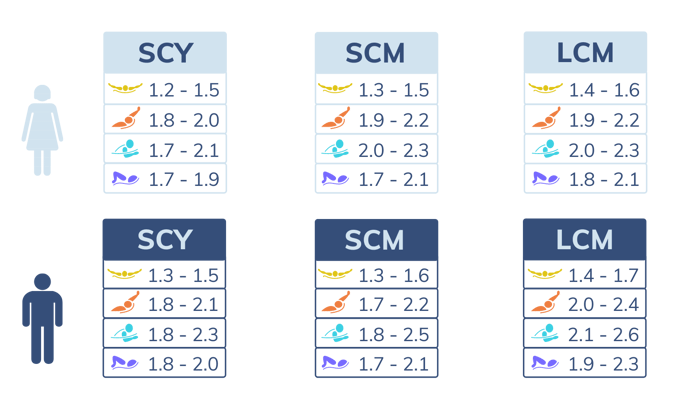Stroke Rate
Find out what Stroke Rate is, how it's measured, how you know if you're doing well or not, and how to improve it.
What is Stroke Rate?
Stroke Rate looks at how fast a swimmer takes each stroke. It is best used in conjunction with DPS to determine the best rate for each person.
How is it measured?
Stroke Rate is measured as the duration of a single stroke cycle (i.e. completing a pull on both arms). A higher Stroke Rate means that the swimmer is pulling at a higher speed. TrtionWear breaks down Stroke Rate into 4 distinct metrics, so you can understand how it changes throughout the course of a length. Here is how each is defined.
- Stroke Rate: the average duration of all the stroke cycles in a single lap
- Stroke Rate Start: the average cycle time for cycles 2-6 in any given lap
- Stroke Rate Mid: the average cycle time of the middle 4 cycles in any given lap
- Stroke Rate End: the average cycle time for the last 4 cycles in any given lap
What is a good Stroke Rate?
Different distances and swimmer physiology require different approaches to Stroke Rate. For instance, sprinters, as well as shorter swimmers may benefit more from a faster Stroke Rate. while long-distance or taller swimmers with a larger wingspan might benefit from a longer Stroke Rate with a stronger DPS. In either case, however, ensure that modifying Stroke Rates does not come at the cost of compromising form or DPS.
Typical Metric Range
Stroke Rate can be displayed in a variety of ways, including seconds per cycle (s/cyc), seconds per stroke (s/str), Strokes per minute (str/min), and Cycles per minute (cyc/min). In the chart below, we are showing the full Stroke Rate value in seconds per cycle.
 How to Improve Stroke Rate?
How to Improve Stroke Rate?
There are two ways to improve Stroke Rate. First by simply swinging your arms faster, but more importantly by learning to control your rate throughout a rep or race. Work on sets with a target Stroke Rate per lap to help maintain a consistent pace. Always remember to consider the DPS trade-off when working on Stroke Rate, to ensure you don’t lose ground overall in your Overwater Speed.
